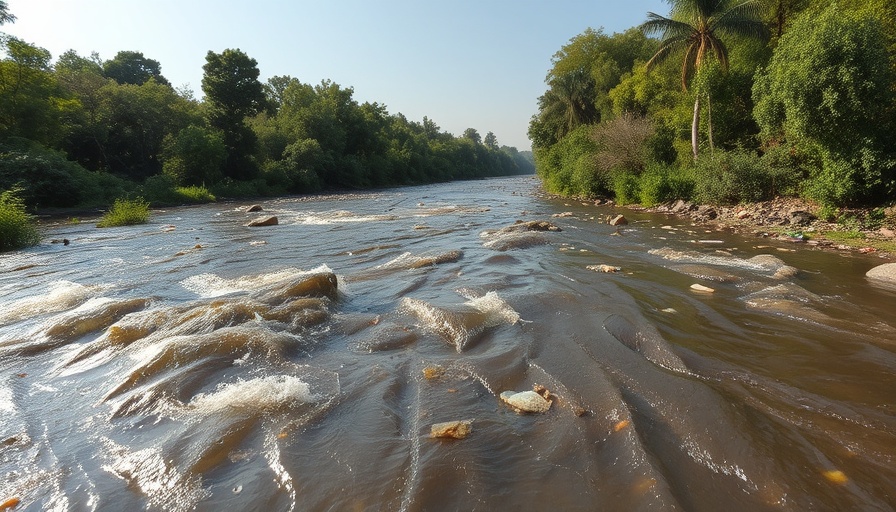
Unpacking the Environmental Costs of Antibiotics
In a groundbreaking study led by researchers at McGill University, scientists have unveiled a concerning reality: antibiotic pollution from human use is contaminating rivers worldwide at alarming levels. Incredibly, approximately 8,500 tons of antibiotics make their way into river systems globally every year, which is nearly one-third of what is consumed by humans annually. Despite being processed through wastewater treatment systems, these drugs continue to pose risks to both aquatic ecosystems and human health.
Understanding the Scale of Contamination
The study, published in PNAS Nexus, highlights that while the concentration of antibiotics in many rivers might seem insignificant, the chronic and cumulative exposure presents substantial risks. The research utilized a global model backed by data from nearly 900 river locations, revealing that amoxicillin— the world’s most frequently used antibiotic— often appears at hazardous levels, particularly in regions like Southeast Asia where antibiotic use is skyrocketing and wastewater treatment systems are underdeveloped.
The Silent Threat to Aquatic Life
Chronic exposure to low levels of antibiotics can create a perfect storm for drug-resistant bacteria to flourish, a phenomenon that threatens not only biodiversity but also human health through the potential contamination of drinking water sources. The implications of this research underscore the urgent need for better monitoring systems of pharmaceuticals in aquatic environments. As Jim Nicell, a co-author of the study, eloquently puts it: the pollution stemming from human consumption of antibiotics alone is a critical issue, exacerbated by additional sources from livestock and pharmaceutical waste.
Why This Matters to Health Professionals
For health marketers and CEOs operating in the health tech sector, this has significant implications. The intersection of antimicrobial resistance and technological innovations in healthcare could dictate new strategies for marketing public health initiatives. As businesses look to promote new health technologies, awareness around antibiotic resistance can serve as a guiding principle in messaging and product development.
Future Trends in Health Technology
The need for integrated monitoring systems and innovative solutions around antibiotic use shines a spotlight on the role of technology in tackling these challenges. Businesses that can provide cutting-edge analytics in wastewater treatment or develop apps to raise awareness around antibiotic stewardship will uniquely position themselves in a growing market that bridges health and environmental concerns.
Actionable Insights for Businesses
As marketing managers and industry leaders, thinking proactively can turn potential risks into opportunities. Businesses can engage in corporate social responsibility initiatives that focus on antibiotic stewardship, perhaps launching campaigns that promote the prudent use of antibiotics or investing in research dedicated to wastewater innovations. These actions not only enhance brand reputation but also contribute to public health initiatives.
The Call for Collaborative Solutions
Addressing this multifaceted issue requires collaboration between health professionals, environmental organizations, and technology innovators. By pooling resources and knowledge, opportunities for innovative solutions can surface, especially in creating sustainable practices that prevent the further contamination of our vital water systems.
Conclusion
With millions of kilometers of rivers at risk and rising antibiotic resistance rates, the findings of this study cannot be ignored. There is a significant urgency to act, not just for the health of aquatic ecosystems but for human health as well. As leaders in business and technology, leveraging this information thoughtfully can lead to impactful change. By making informed decisions today, there’s potential for a healthier tomorrow.
 Add Row
Add Row  Add
Add 




 Add Row
Add Row  Add
Add 

Write A Comment